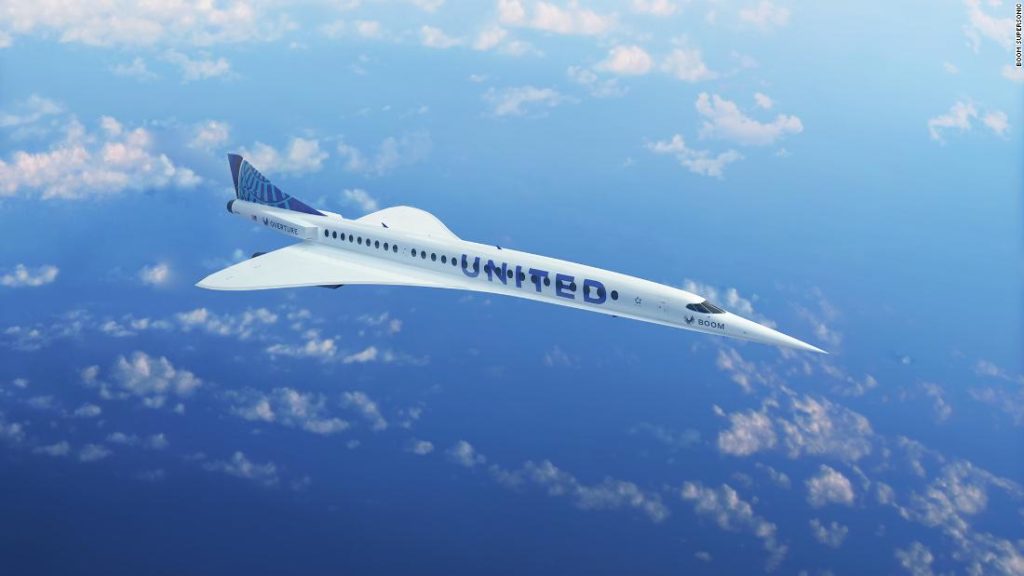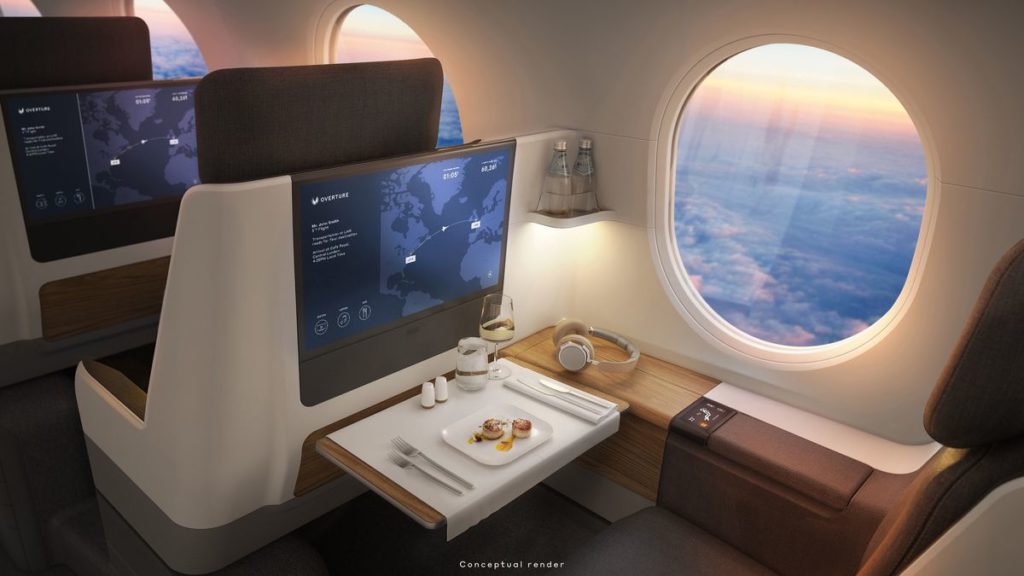In a surprising development, United Airlines, the third largest airline in the world, has signed a commercial agreement with Boom Supersonic to purchase 15 of the startup’s Overture aircraft, with an option to buy 35 more. The deal is contingent on the Denver-based startup’s ability to actually deliver the jets, which have not yet been fully developed, as well as how their fair in United’s safety testing.
Boom Supersonic is so far using 3D printing technologies from at least two firms, Stratasys and VELO3D. With its XB-1 demonstrator aircraft, a scaled-down version of the Overture, the company included 21 3D printed parts. This included 12 Variable Bypass Valve engine and fuselage manifolds, four NACA ducts, and various louvers made using the Sapphire 3D printer from VELO3D.
It is, therefore, expected that the Overture aircraft will also include 3D printed components. However, these jets still need to be built and pass inspection. Boom expects this to occur by 2025 before taking to the air in 2026 and finally carrying passengers by 2029. The startup has said that these planes will be able to fly from New York to London in only 3.5 hours, half the typical seven-hour flight. A flight from Los Angeles to Sydney would be cut down from a typical 15-hour flight to just six hours and 45 minutes.
Boom believes the demonstrator will reach speeds of Mach 1.3, powered by three J85015 engines from GE and typically used for military aircraft. The Overture is expected to reach speeds of Mach 1.7. While Boom suggests tickets will cost $5,000 per seat, United has not come to a conclusion on pricing.
Given the impacts of the pandemic on air travel and the airline industry, one would expect a company like United to spend less on semi-non-existent technology. The International Civil Aviation Organization reported this January that air travel fell by about 60 percent over the course of 2020, resulting in $370 billion in losses. Though UA stock is up 100 percent compared to last year, the company has heavily diluted its stock and is not profitable. Perhaps it feels confident with $7 billion in Cares Act lines of credit.
United isn’t the only ones investing in Boom aircraft, however. In addition to Rolls-Royce and the U.S. Air Force, with whom the startup has contracts or memorandum, Boom has funding and preorders from Virgin Group and Japan Airlines. This could be part of the larger sustainability program stated by the airlines. United and Boom claim that the aircraft will be “net-zero carbon from day one [and] optimized to run on 100 percent sustainable aviation fuel,” but have not stated how they will reach these goals or what kind of alternative fuel will be used.
The use of jet fuel for supersonic aircraft may be particularly problematic because, though Boom is aiming for carbon-neutral flying, it will require more fuel to go faster. According to the International Council on Clean Transportation, Overture aircraft could use as much as five times more fuel per passenger than a standard jet.
Boom Supersonic has partnered with Prometheus Fuels, a startup that claims to extract CO2 from the air and hydrogen from water to create jet fuel. However, that technology is still in the early development phase. As Earther put it:
While the technology sounds impressive, Prometheus is still in the middle of refining and scaling up its processes. As of 2019, the efficiency of converting electricity into fuel via its process remained low. Founder Rob McGinnis estimated a single optimized forge could produce 20 liters of gasoline a week, and the company was only preparing to build a shipping container-sized factory that could produce hundreds of thousands of liters annually. For comparison, passenger jet fuel tanks usually have a maximum capacity in the tens of thousands of liters. Meanwhile, United’s entire fuel use in 2019 was 4.3 billion gallons. It doesn’t seem likely Prometheus will be fueling United’s entire fleet of Boom Overture jets anytime soon, let alone making a dent in United’s massive fuel (and carbon) footprint.
United has previously stated it is working with a firm that converts waste into fuel, So, it may be that “carbon neutral” refers to the use of biofuels that are considered to be neutral sources of energy because the biomass they use comes from plants that have absorbed CO2, potentially cancelling out any emissions resulting from their use. However, the production, processing and transport of those fuels may impact the overall carbon footprint of the entire lifecycle of the product, with some crops having larger footprints than others. If biofuels could be a viable and truly 100 percent carbon-neutral technology, then they could reduce the 3.5 percent of CO2 emissions associated with the global aviation industry.
Based on the current development trajectory for biofuels, however, many environmental experts don’t expect that there will be a suitable replacement for jet fuel by 2050. This is for a number of reasons, including the fact that many more sustainable alternatives haven’t been sufficiently developed, while others would take away from existing agricultural land use or biomass used for heat and power production.
Finally, it may be that the firms plan to use carbon credits to offset any emissions made by the aircraft. Offsets are notoriously problematic because they allow companies to continue emitting while funding a reforestation or renewable energy project elsewhere in the world. For all of these reasons, degrowth advocates suggest that there may need to be limitations on flying overall so that we don’t get stuck relying on future technologies while greenhouse gasses need to be reduced in the immediate present.
Subscribe to Our Email Newsletter
Stay up-to-date on all the latest news from the 3D printing industry and receive information and offers from third party vendors.
You May Also Like
3D Printing Unpeeled: New Arkema Material for HP, Saddle and Macro MEMS
A new Arkema material for MJF is said to reduce costs per part by up to 25% and have an 85% reusability ratio. HP 3D HR PA 12 S has been...
3D Printing News Briefs, January 20, 2024: FDM, LPBF, Underwater 3D Printer, Racing, & More
We’re starting off with a process certification in today’s 3D Printing News Briefs, and then moving on to research about solute trapping, laser powder bed fusion, and then moving on...
3D Printing Webinar and Event Roundup: December 3, 2023
We’ve got plenty of events and webinars coming up for you this week! Quickparts is having a Manufacturing Roadshow, America Makes is holding a Member Town Hall, Stratafest makes two...
Formnext 2023 Day Three: Slam Dunk
I’m high—high on trade show. I’ve met numerous new faces and reconnected with old friends, creating an absolutely wonderful atmosphere. The excitement is palpable over several emerging developments. The high...

































